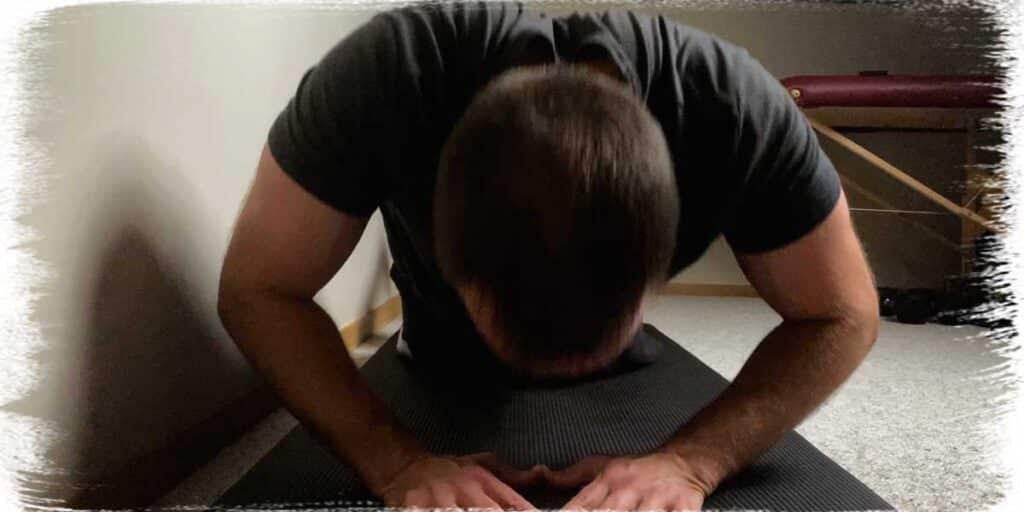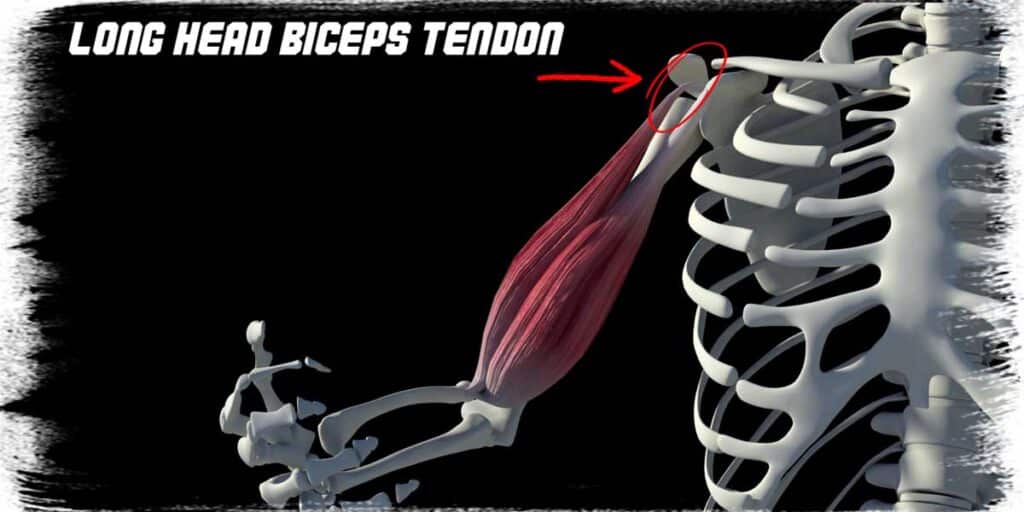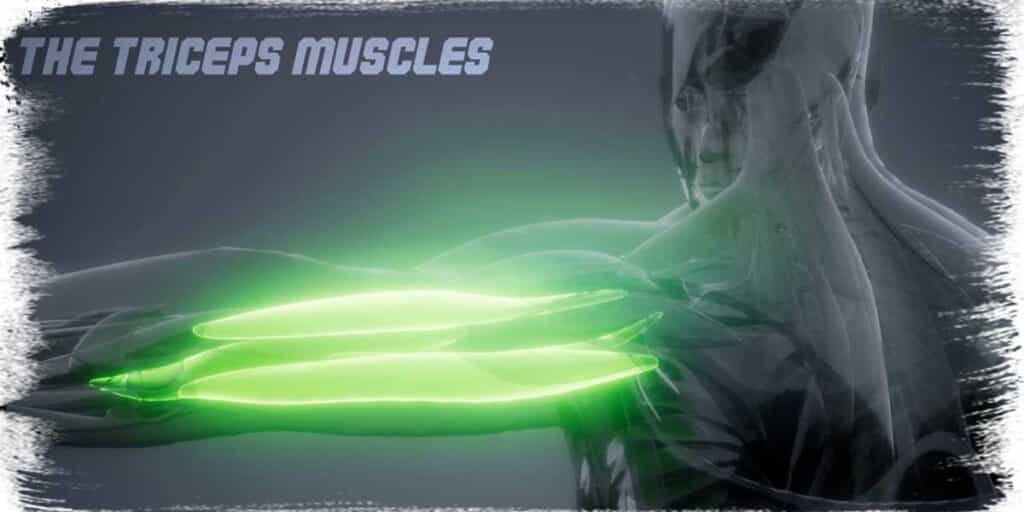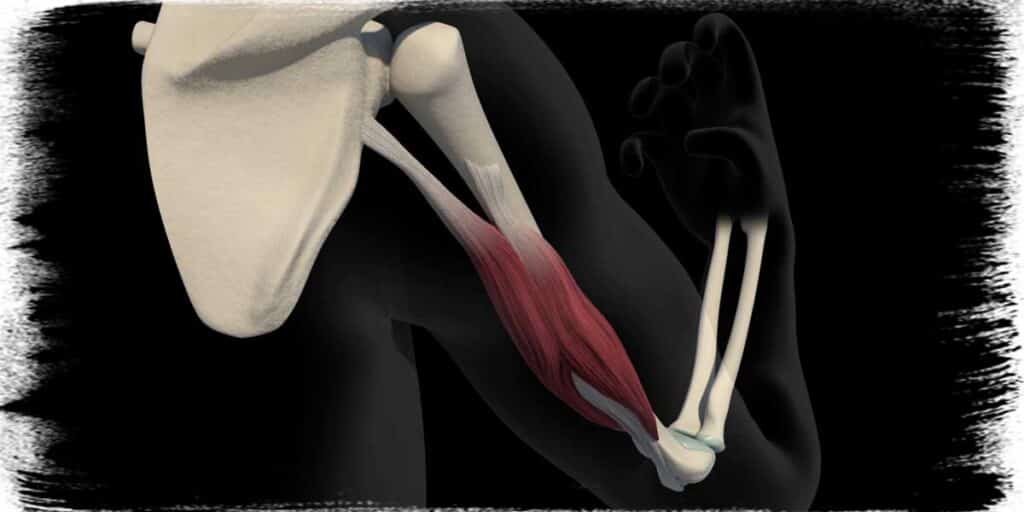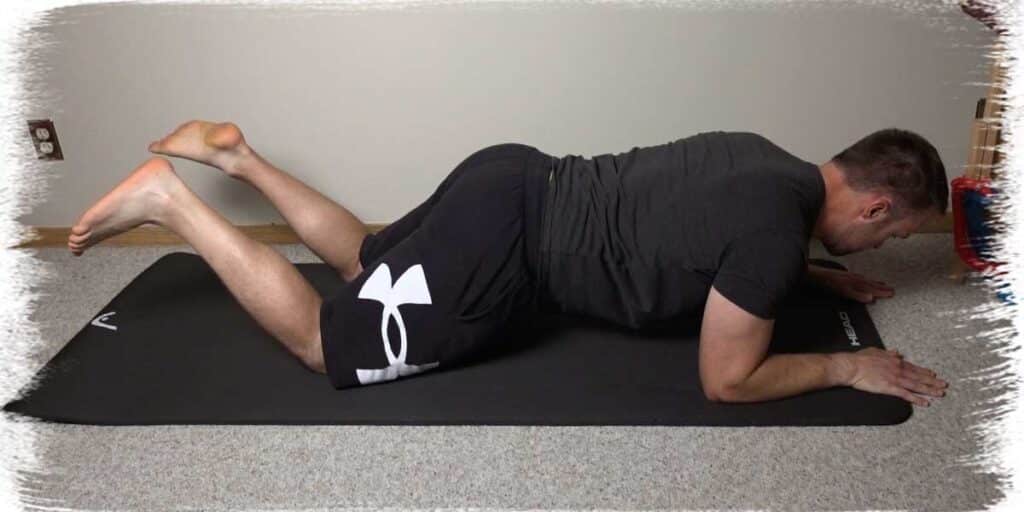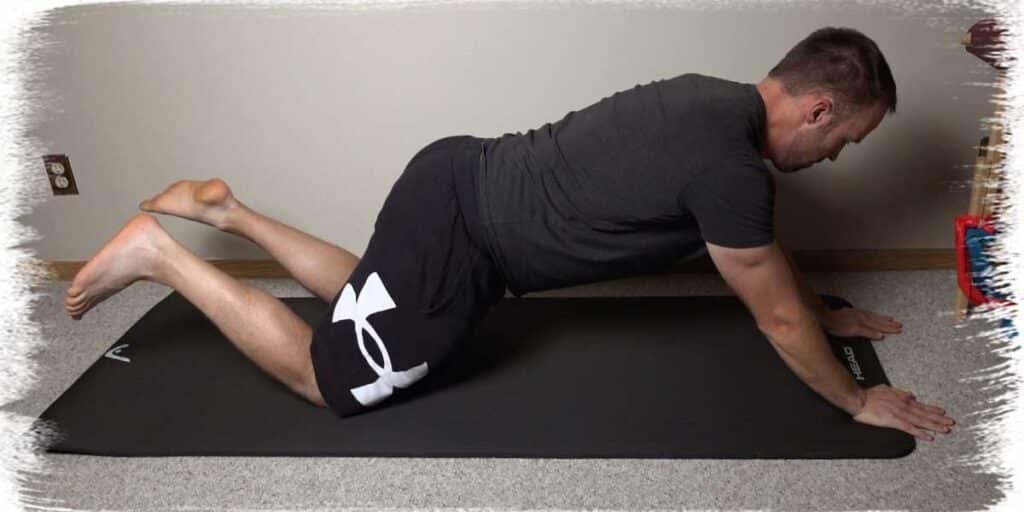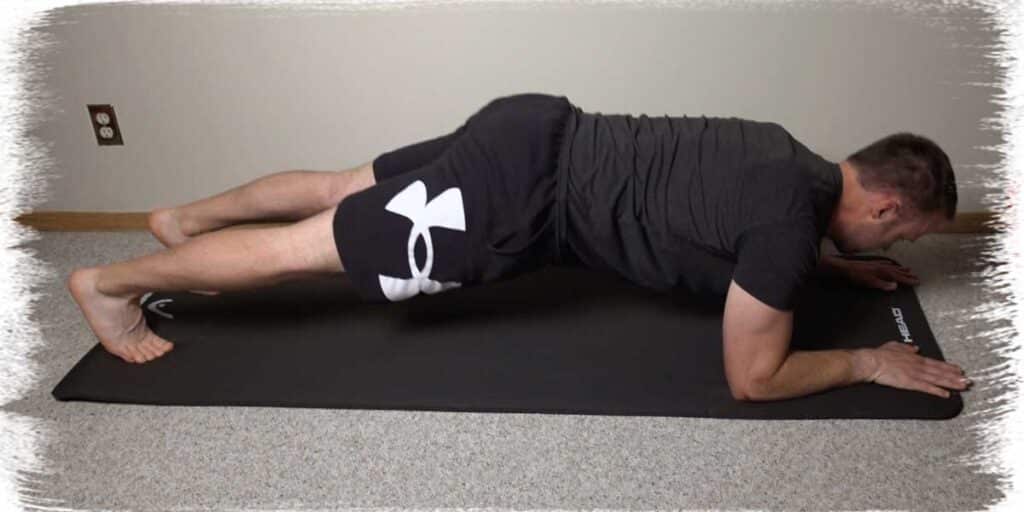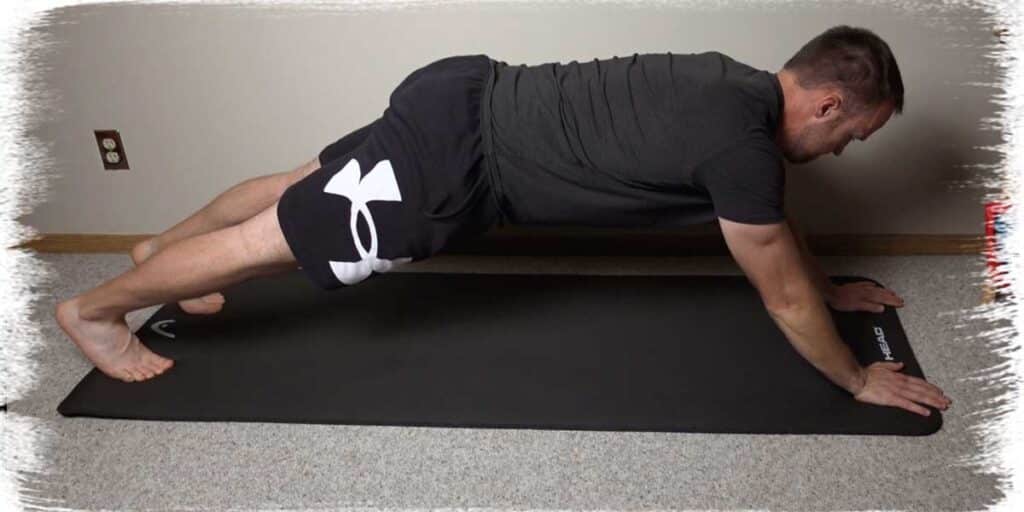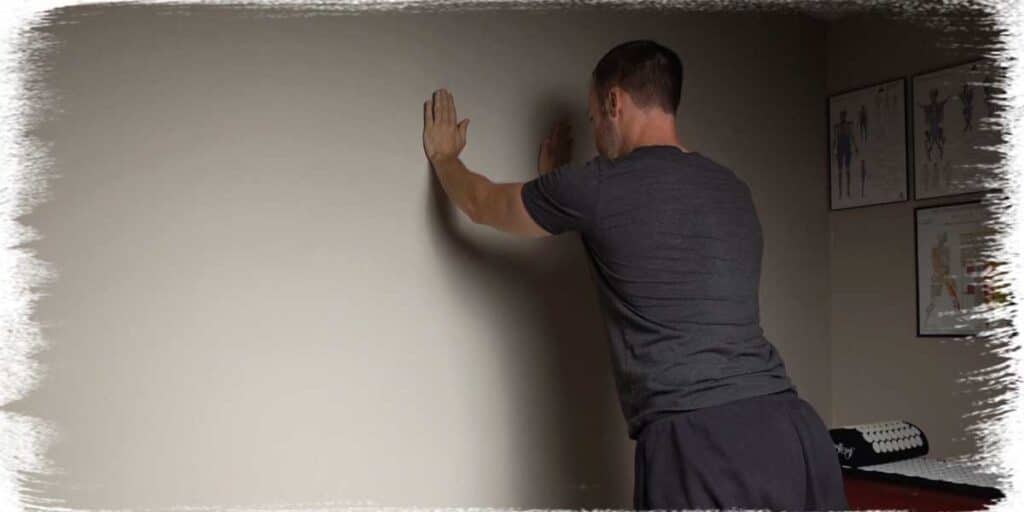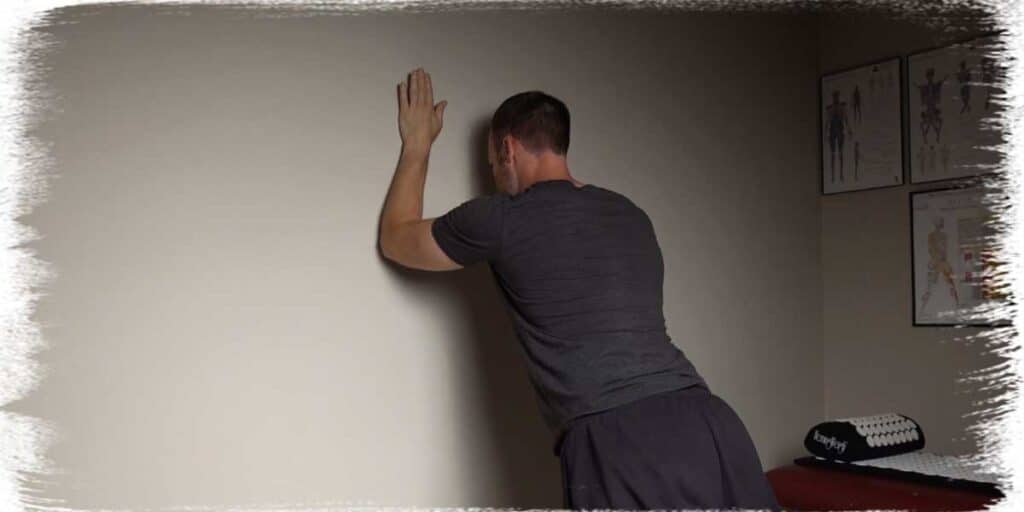The internet is filled with all sorts of push-up variations that claim to be the best for building bigger and stronger triceps muscles. Yet, many of them require the shoulder joint to be placed in less than ideal positions for the variation. This can lead to shoulder irritation, pain, and even lost time from your workout pursuits as a result.
Enter the Sphinx push-up, a push-up that avoids this issue and challenges your triceps in ways that any other push-up variation could only dream of doing.
The sphinx push-up is the best push-up for increasing tricep size and strength due to its unique demands that force the triceps muscles to perform nearly the entire push-up. It can be modified for all fitness types and keeps the shoulders and arms in a safe position (unlike other tricep push-ups).
If you’re hungry to learn how to do this push-up effectively and want to know all the details that make this the KING of all triceps-dominant push-ups, then keep on reading!
ARTICLE OVERVIEW (QUICK LINKS)
Click/tap on any of the following headlines to instantly jump to that section of the article!
Why other triceps-focused push-ups fall short
Why the Sphinx push-up hammers the triceps muscles
How to perform (and modify) the Sphinx push-up
Final thoughts
Why other triceps-focused push-ups fall short
The classic “diamond” push up Illustration of the long head biceps tendon
Ask any fitness enthusiast what a good push-up is for targeting the triceps muscles, and you’ll most often hear answers such as “narrow-width push-ups” or “diamond push-ups.” These aren’t “bad” exercises, per se, but there can be two shortfalls with these types of push-ups based on an individual’s needs and goals.
- push-ups that involve a narrow-width of the hands often require the individual to internally rotate (twist inwards) their arms while performing the push-up. For many, internally rotating the arms while performing the push-up can lead to pain, discomfort or other issues based on the health of their overall shoulders. The primary tissue to watch out for here is often the long head biceps tendon, which attaches just above the shoulder joint. push-ups performed while the arms are rotated inward can often irritate this structure.
- If the actual goal of the push-up is to focus as much of the movement (and thus, muscular effort) on the triceps muscles, then these types of push-ups are not the way to go since they will still require much work to be done by the pectoral muscles. The narrow width of the hands/arms biases the triceps a bit more, but that’s about it. If you’re wanting to really put the emphasis on your triceps, you must eliminate the pectorals from the pushing movement as much as possible.
This is where the Sphinx push-up comes in. Named after the arm position that it puts you in (a quite similar looking position as the Great Sphinx of Giza limestone statue), this push-up avoids internally rotating your shoulders and places nearly all of the push-up emphasis onto the triceps by forcing the elbows to straighten from a bent-position to raise the body away from the floor.
Why the Sphinx push-up hammers the triceps muscles
In the world of functional anatomy, the pectoral (chest) muscles and the triceps muscles are best friends and form a powerful movement-alliance; they both perform distinct movements from one other, but they also always work as a team for pushing motions.
Related article: Foam Rolling Your Pecs: A Much More Practical & Effective Way
Whenever you push an object away from you, your pectoral muscles and triceps do so together, as a team. This is the case with any style of traditional push-ups, be it the standard push-up or a narrow-width push-up.
But the Sphinx push-up is performed by straightening the elbows without any actual movement coming from the shoulder joint (taking the pectoral muscles out of the equation almost entirely, aside from the isometric contraction they hold).
The result is a push-up movement that forces the triceps to do nearly all the work by themselves while the pectoral muscles sit back and just “watch.” And since the triceps are smaller, less powerful muscles than the larger pectoral muscles, pushing the body upwards now becomes a significant task for the triceps to have to endure and complete.
How to perform (and modify) the Sphinx push-up
The Sphinx push-up is straightforward to perform, but it can be pretty challenging for some, so if you find the standard Sphinx push-up too difficult, be sure to read the section on how to modify the movement to make it more appropriate for you.
The standard Sphinx push-up
For the standard Sphinx push-up, you can perform it from a full plank position (where you’re on your toes), or you can perform it from the knees. Neither is right or wrong and due to the challenges involved, you may need to go from the knees if trying to achieve your targeted repetition range or lighten the demands imposed on your triceps tendon just above your elbow.
Performing the movement
Starting position (from knees) Finish position (from knees)
- From either your knees or your toes, assume the plank position.
- Keep your forearms parallel to one another (pointing forward).
- Make sure that your elbows are NOT directly underneath you. They should be in front of you by a couple of inches. This helps to reduce the amount of tension that your triceps tendon will undergo during the movement. Feel free to play around with the positioning until you find what’s best for you.
- Push your palms down onto the ground so that your elbows begin to straighten and your body raises directly upwards in one continuous motion.
- Slowly lower yourself back down onto your forearms and repeat for as many repetitions as desired or needed.
Starting position (from toes) Finish position (from toes)
Have fun feeling the burn!
The modified Sphinx push-up
For many individuals, the standard Sphinx push-up can be a bit much. Whether it’s due to lacking strength, recovering from injury, or any other combination of reasons, it may not be feasible to perform this movement fully against gravity. If that’s the case, finding a way to partially eliminate gravity is your best bet (don’t worry, you can fine-tune just how much of the gravity you want to eliminate).
All you need is a wall that you can safely lean against.
Performing the movement
Starting position Finish position
- Assume a plank position by leaning against the wall. Your arms will be in the same position as for the standard version on the ground.
- The more you lean into the wall, the more resistance you will have for the movement.
- The less you lean into the wall, the less resistance you will have for the movement.
- Press your hands into the wall, forcing your elbows to straighten out and your body to move away from the wall. Make sure everything moves in one continual movement.
- Slowly lower yourself back towards the wall and repeat for as many repositions as needed or desired.
- Adjust your foot positioning as needed until you have found the optimal angle of leaning into the wall for required resistance.
Final thoughts
There’s nothing wrong with performing traditional narrow-width push-ups for targeting your triceps a bit more. Still, it frequently compromises some aspects of the shoulder in the process. No single exercise is appropriate for every person (including the Sphinx push-up), but due to the more ideal shoulder and arm positioning along with available modifications that can be made, the Sphinx push-up offers some serious benefits for most individuals over the more popular and more traditional tricep-biasing push-ups.
Give the Sphinx push-up a try. You’ll love having this awesome tricep-dominant push-up in your exercise arsenal, although your triceps might beg to differ in the moment due to how much you’ll be picking on them! But they’ll become much more robust for doing so.
Now, stop reading and go get some bigger and stronger triceps with this push-up!

Hi! I’m Jim Wittstrom, PT, DPT, CSCS, Pn1.
I am a physical therapist who is passionate about all things pertaining to strength & conditioning, human movement, injury prevention and rehabilitation. I created StrengthResurgence.com in order to help others become stronger and healthier. I also love helping aspiring students and therapists fulfill their dreams of becoming successful in school and within their clinical PT practice. Thanks for checking out my site!


